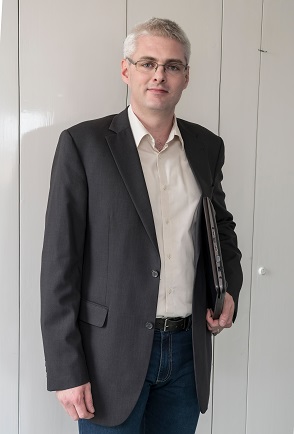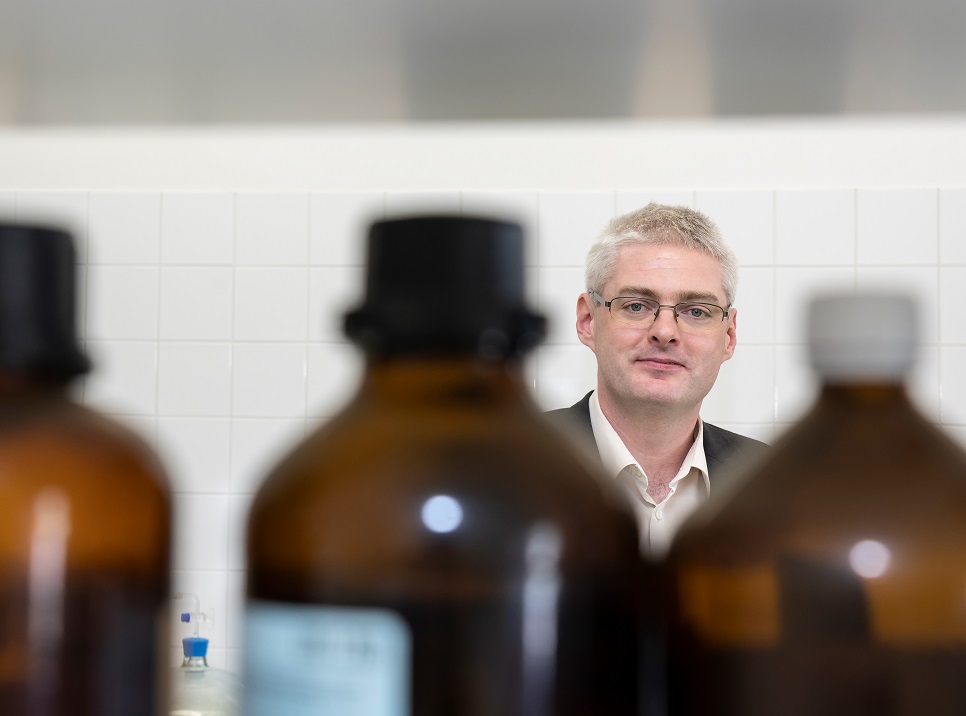
Attila Kondor, project leader at the Research Centre for Astronomy and Earth Sciences of HAS.
Their research leading also to practicable developments is funded through the National Competitiveness and Excellence Programme (NVKP_16).
The call of the National Competitiveness and Excellence Programme (NVKP_16) was open to project proposals of Hungarian institutions of higher education, research institutions and Central Hungarian consortiums established by businesses. The scheme aimed to support research, development and innovation activities having a strategic importance and improving the competitiveness of Hungary and resulting in marketable products, services or technologies of high intellectual added value.
To this call, the Geographical Institute of the Research Centre for Astronomy and Earth Sciences of HAS has submitted a winning project proposal containing a rather complex approach to the environmental load represented by urbanisation. They do a simultaneous research into the spatial movement and the behaviour of people residing in the Budapest metropolitan region (for example using the data of their mobile phones), the quantity of substances emitted to the environment with communal waste and affecting the hormone system, and develop risk mitigating solutions.
In the past decades, metropolitan regions (cities together with their commuter belts) – central cities can be frequently observed despite a decreasing population – kept expanding in Europe and in Hungary. The number of registered residents, however, does not always reflect realistic information on the users of metropolitan regions. Researchers assume that their number is much higher than that reflected in the statistics.
“Many of the people living in urban areas around cities are either doing only seasonal work or living there but are not registered residents”, says the project manager, Attila Kondor, a researcher at the Research Centre for Astronomy and Earth Sciences of HAS. “And the extreme dynamic changes of these regions add another perspective to our research. In the case of Hungary, commuting, daily mobility plays a major role especially in the environs of Budapest. In the Budapest metropolitan region encompassing 186 localities and also serving as the sample area of the project, 400,000 people are commuting even according to the statistics, which represents 13 million “commuting kilometres” on a daily basis.”
Both population research and environmental protection rely heavily on statistics. In many cases it works well but, in fact, sometimes people happen to be elsewhere and their daily rhythm also differs from those assumed. According to Attila Kondor “good environmental policy can only be built on less biased data but these data may also have an influence on the direction of technological developments.” The movement of people is assessed with the help of a model using cell information provided by mobile phone service providers. They have managed to conclude an agreement with Hungarian Telekom: the service provider supplies anonymous information to the researchers based on which the daily movements of mobile subscribers can be identified.
In the framework of field testing, the researchers probe surface and groundwaters for their condition. Not only the types of substances (drug residues, heavy metals) identified bear importance but also the reasons for certain compounds occurring at certain places and not at others or in other types of waters. They are looking for a “natural media” – whether soil, a set of environmental parameters or a material – that demonstrably functions well in nature, filters hazardous substances out and protects groundwaters. This basic research is, in part, the starting point of technological developments, for example the design of filtering systems.
Based on the outputs of the basic research, the project participants are working on risk mitigation developments for public and private entities. To detect the pollution level of natural waters, the Department of Aquaculture of Szent István University is developing a rapid test. For a long time now, they have been studying zebrafish (Danio rerio) whose embryos – and the full-grown animals of certain varieties – are transparent. Influenced by certain substances, zebrafish emits light (a fluorescent sign). They “tune” the fishes to high-risk compounds existing in the field and calibrate their light emission. With this they can give an inexpensive testing device to, for example, smaller or larger food industry businesses operating their own industrial water resource.
Through research laboratory tests, they are developing a process in cooperation with UTB Envirotech Zrt., one of the industrial partners of the consortium, for detoxifying sewage sludge and they would like to get this process patented. As a result of this process, sludge could be spread on lands as fertilizer. In the consortium, Aquaprofit Zrt. is engaged in the development of a protocol for mitigating the risks to water resources. Either a company or a city may happen to need a risk mitigation plan to protect their waters to be used against drug residual researched in the project under quickly changing circumstances. Should the software developed in the project and used for identifying the potential pollution of the waters of a certain area signal that certain substances pose a risk to a water resource, then a water treatment equipment is worth to be purchased to such area.
“Seemingly harmless materials with currently low concentrations in natural waters must also be intensively studied in the framework of the project”, says Attila Kondor. “But industrial-technological development is unbelievably fast and the basic research revealed that due to concentrated metropolitan consumption, materials we did not deal with just a couple of years ago may very quickly occur; let’s just think of the spreading use of antidepressants or antiepileptic drugs. So environmental loading changes at a rapid pace - and that is what we have to prepare for.”







